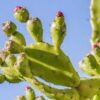Bánh Trôi, Bánh Chay in the Hàn Thực Festival: A Culinary Tradition of the Lunar Calendar

The Hàn Thực Festival, celebrated on the third day of the third lunar month, is a significant occasion in Vietnam, known for its rich history, cultural significance, and unique culinary traditions. Among the most cherished foods of this festival are bánh trôi and bánh chay, two traditional rice-based dumplings that hold both symbolic and cultural importance. These simple yet delightful treats have been enjoyed by generations, symbolizing unity, purity, and the changing seasons. In this article, we will explore the history, symbolism, preparation, and significance of bánh trôi and bánh chay, shedding light on their role in the Hàn Thực Festival and in Vietnamese culture.
1. Understanding the Hàn Thực Festival
The Hàn Thực Festival, also known as the Cold Food Festival, is deeply rooted in Chinese and Vietnamese traditions. The festival commemorates a historical event associated with the noble sacrifice of Jie Zitui, a loyal servant to the Duke of Jin during the Spring and Autumn Period of China. According to legend, Jie Zitui saved his master’s life by cutting a piece of his own flesh to cook and feed him during a time of famine. However, when the Duke later became ruler, he failed to recognize Jie Zitui’s contribution and neglected him. In retaliation, Jie Zitui withdrew to the mountains with his mother. The Duke, feeling guilty, ordered a fire to be set in the mountains to force Jie Zitui out. Tragically, Jie Zitui and his mother perished in the flames. The festival was later established as a tribute to Jie Zitui, and it is now a time to reflect on loyalty, sacrifice, and filial piety.
In Vietnam, the Hàn Thực Festival is celebrated with much enthusiasm, but its traditions have evolved. While the festival retains its historical significance, it has also become a celebration of the changing seasons, with a focus on food and family. The preparation and consumption of bánh trôi and bánh chay during this festival have become a central ritual, symbolizing the renewal of life and the interconnectedness of nature.
2. What are Bánh Trôi and Bánh Chay?
Bánh trôi and bánh chay are two types of traditional Vietnamese rice dumplings that are closely associated with the Hàn Thực Festival. Although they are often used interchangeably, they differ in their fillings, textures, and symbolic meanings.
a. Bánh Trôi (Sticky Rice Dumplings with Sweet Fillings)
Bánh trôi are small, round dumplings made from glutinous rice flour, which gives them a chewy and sticky texture. These dumplings are typically filled with a sweet filling, most often made from mung beans, sugar, and sometimes a salted egg yolk, which provides a rich contrast to the sweetness of the dumpling. The dumplings are then boiled in water, and after cooking, they are often served in a bowl of warm sweet syrup, flavored with ginger or pandan leaves, and topped with toasted sesame seeds and coconut flakes.
The round shape of bánh trôi symbolizes completeness, unity, and the cyclical nature of life. The filling represents the sweet and savory balance in life, while the syrup and toppings add layers of complexity and texture, reflecting the richness of Vietnamese culinary traditions.
b. Bánh Chay (Plain Rice Dumplings)
Bánh chay are similar to bánh trôi in terms of shape and texture, as they are also made from glutinous rice flour. However, unlike bánh trôi, bánh chay are typically plain, without any sweet filling inside. After being boiled, they are often served in a simple sweet syrup made from sugar and sometimes flavored with ginger or pandan. Some variations may include a sprinkle of toasted sesame seeds or shredded coconut for added texture.
The simplicity of bánh chay is symbolic of purity and humility. The absence of a filling allows the chewy texture of the rice flour to take center stage, emphasizing the idea of minimalism and the return to basics. The syrup that accompanies bánh chay is sweet but not overpowering, representing the idea of moderation and balance in life.
3. Cultural Significance and Symbolism of Bánh Trôi and Bánh Chay
The consumption of bánh trôi and bánh chay during the Hàn Thực Festival is laden with cultural and symbolic meanings. These dumplings are more than just food; they represent the cycle of life, the relationship between the earth and the people, and the balance between sweetness and bitterness in the human experience.
a. Symbol of Purity and Renewal
Both bánh trôi and bánh chay are often seen as symbols of purity and renewal. The white color of the rice flour represents the simplicity and purity of life, while the round shape symbolizes wholeness and the cyclical nature of existence. During the Hàn Thực Festival, people believe that by consuming these dumplings, they can purify their bodies and minds, preparing for the new season ahead. The act of making and eating these dumplings is also a way of honoring the ancestors and expressing gratitude for the harvest.
b. Cultural Connection to the Seasons
The Hàn Thực Festival occurs during the transition between winter and spring, a time when nature is awakening and the weather begins to warm. Bánh trôi and bánh chay reflect this seasonal shift, with their simple ingredients and comforting nature symbolizing the renewal of life. In Vietnamese culture, the preparation of food for seasonal festivals is seen as an offering to nature, and bánh trôi and bánh chay are no exception. By eating these dumplings, families express their gratitude for the harvest and the changing of the seasons.
c. Representation of Family Unity and Filial Piety
The preparation of bánh trôi and bánh chay is often a family affair, with multiple generations coming together to make the dumplings. This communal activity reinforces the values of family unity and cooperation. In Vietnamese culture, family is a cornerstone of society, and the act of sharing food, especially during important festivals, is a way of strengthening family bonds. Furthermore, the festival is a time to honor one’s ancestors, and the act of making and eating bánh trôi and bánh chay is a way of showing respect for the sacrifices and contributions of previous generations.
4. How to Make Bánh Trôi and Bánh Chay
Making bánh trôi and bánh chay is a skillful and time-honored process that requires careful attention to detail. The preparation process is simple but involves several key steps, each of which is important for achieving the perfect texture and flavor.
a. Making Bánh Trôi
- Ingredients:
- Glutinous rice flour
- Mung beans (or other sweet fillings like red beans or lotus seeds)
- Sugar
- Salted egg yolks (optional)
- Water
- Pandan leaves (for fragrance)
- Toasted sesame seeds (for topping)
- Coconut flakes (for topping)
- Preparation:
- First, prepare the filling by cooking the mung beans until soft, then mashing them and mixing them with sugar to create a sweet paste. If desired, add a salted egg yolk to the filling.
- Next, make the dough by mixing glutinous rice flour with water until it forms a smooth, pliable dough. Divide the dough into small portions and flatten them into discs.
- Place a spoonful of the sweet filling in the center of each disc and carefully seal the edges, rolling the dough into small round dumplings.
- Boil the dumplings in water, and once they float to the surface, cook for a few more minutes.
- Serve the dumplings in a bowl of sweet syrup flavored with pandan or ginger, and top with toasted sesame seeds and coconut flakes.
b. Making Bánh Chay
- Ingredients:
- Glutinous rice flour
- Sugar
- Pandan leaves or ginger (for flavor)
- Toasted sesame seeds (optional)
- Coconut flakes (optional)
- Preparation:
- Mix glutinous rice flour with water to form a smooth dough.
- Roll the dough into small, round dumplings.
- Boil the dumplings in water, and once they float to the surface, cook for a few more minutes.
- Serve with a simple sweet syrup made from sugar, flavored with pandan or ginger. Top with toasted sesame seeds or shredded coconut, if desired.
5. Bánh Trôi and Bánh Chay in Modern Times
While bánh trôi and bánh chay remain essential to the Hàn Thực Festival, these dishes have also evolved over time. In modern-day Vietnam, you can find a variety of fillings and toppings for bánh trôi and bánh chay, including fruits, nuts, and even savory versions. Despite these variations, the traditional forms of these dumplings are still widely cherished, especially during the Hàn Thực Festival, when they serve as a reminder of the importance of tradition, family, and the changing seasons.
In conclusion, bánh trôi and bánh chay are not only delightful culinary treats but also rich in cultural significance. These dumplings, made from simple ingredients yet full of symbolism, reflect the values of purity, unity, and respect for tradition that are central to the Hàn Thực Festival. By continuing to make and enjoy bánh trôi and bánh chay, the Vietnamese people preserve a beautiful part of their cultural heritage, passing down the stories and meanings behind these traditional dishes to future generations.

